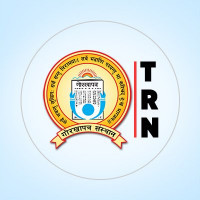- Saturday, 26 July 2025
Chinese social work, prosperity in ethnic regions and border-area revitalization
He Zhang
Across China’s vast borderlands, a sweeping blueprint for rural revitalization is unfolding—one that not only sketches the region’s economic future but also embodies the heartfelt aspirations of all ethnic groups for a better life. On this boundless and resource-rich frontier, Chinese social workers stand out as vividly as the land itself. Armed with solid expertise, refined skills and a spirit of selfless service, they have become the most dynamic architects of this magnificent undertaking.
Rooted at
the grassroots, these professionals deploy both their specialized knowledge and
intimate local wisdom. By walking into villages and sitting face-to-face with
residents, they weave advanced social-work concepts into the distinct cultural
traditions and evolving development needs of the border areas, integrating
their efforts thoroughly and at every level of local governance. Their work
provides a robust professional safeguard and intellectual engine for the
science-driven advance of rural revitalization, while diversified, precision
services—ranging from industry support and skills training to cultural
preservation, ecological stewardship and community building—inject powerful,
home-grown momentum into sustainable economic and social progress.
With passion
and a pragmatic style, these social workers are now turning the fruits of rural
revitalization into tangible improvements in daily life for every ethnic group
along the frontier, composing a contemporary epic that is as warm in humanistic
concern as it is rich in practical results. Together, they are painting a
brand-new panorama of prosperity for China’s border regions.
The 2025 No.
1 Central Document takes the all-round advancement of rural revitalization as
its fundamental compass, elevating the modernization of the rural governance
system and capacity to the level of a core strategic task and systematically
shaping the top-level design for “agriculture, rural areas and farmers” in the
new era. For the first time, it calls for tailoring measures to local
endowments and development stages, nurturing region-specific rural competitive
industries through deeper institutional reform and innovation. It also mandates
the creation of tighter, more effective mechanisms that link enterprises and
cooperatives with smallholder farmers, ensuring that farmers remain the
principal stakeholders and primary beneficiaries of industrial growth, and that
the fruits of rural revitalization are shared both more widely and more fairly
among the rural population.
Xinjiang is
turning the central call for rural revitalization into concrete practice by
pairing strong Party leadership with grassroots governance innovation. The
region has woven a distinctly frontier-flavored tapestry of rural governance by
integrating “national identity, civic consciousness and the rule of law” into
every thread of community life. Its signature mechanism—teams of cadres and
specialists dispatched village by village—brings together social workers,
agricultural technicians, and education and medical professionals in a single,
mutually reinforcing force. The result is a seamless synergy that supplies the
borderlands with both the talent and the brainpower needed to sustain rural
revitalization.
Xizang (Tibet)
Autonomous Region is leveraging the central government’s preferential policies
to the fullest, capitalizing on its unique highland resources and ecological
strengths to expand signature sectors such as highland barley cultivation and
yak husbandry. The region is building an end-to-end industrial chain—covering
production, processing and sales—that embeds these sectors in a cohesive value
system. By integrating primary, secondary and tertiary industries, Tibet has
significantly raised the organizational level and market engagement of its
farmers and herders, converting distinctive resources into upgraded economic
advantages.
These
targeted and actionable measures not only map out a clear institutional pathway
for professional social workers to embed themselves in rural revitalization,
but also drive the borderland ethnic regions to achieve synchronized
breakthroughs in both industrial upgrading and social-governance innovation. By
forging a pluralistic, co-governing mechanism—led by the government,
coordinated by society and joined by the public—China has shaped a new
rural-revitalization landscape where industries flourish, ecosystems stay
livable, local customs remain civil, governance proves effective and life grows
prosperous. This delivers a replicable and scalable set of practices for the
nationwide rural-revitalization drive, showcasing the institutional strengths
and governance efficacy of the socialist path with Chinese characteristics.
Fresh field
data now show that counties along China’s frontier where social workers are
fully embedded are powering a surge in rural specialty industries. In these
border regions, the annual output value of signature sectors has climbed to a
robust 15.8 percent—outpacing the national rural-industry average of 12.6
percent by a clear 3.2 percentage points. The number is more than a statistic;
it is compelling evidence that professional social work is becoming a decisive
accelerator of local growth.
The same
jurisdictions have also scored breakthroughs in modernizing grassroots
governance. In Xinjiang and Tibet, systematic upgrades to rural infrastructure
have pushed the coverage of village-level express-logistics service stations to
92 percent, knitting together a fully-functioning “package-to-every-village”
network. Parallel gains in living conditions are equally striking: after
sustained campaigns to improve rural sanitation, the share of households with
hygienic toilets has—for the first time—surpassed 80 percent. These hard-won
improvements not only lift daily life; they also slash the operating costs and
logistical hurdles social workers face in the field, creating a virtuous cycle
for service delivery.
Talent
pipelines are expanding just as fast. Inner Mongolia’s “Pioneer Social Work
Fellowship” has already produced 380 bilingual professionals who combine
first-rate social-work skills with fluency in both Mandarin and local ethnic
languages. Deployed at the grassroots, these specialists have achieved a 91.4
percent success rate in mediating ethnic disputes and explaining welfare
policies—results that decisively outstrip traditional administrative methods.
By fusing professional training with home-grown talent cultivation, the program
has cracked the long-standing shortage of frontline social workers and
delivered a replicable model of talent revitalization. Together, these advances
provide the human capital and institutional scaffolding that border regions
need to sustain both social governance innovation and the broader
rural-revitalization drive.
Unlike the
single-track, subsidy-heavy approach that has long characterized rural
revitalization in most Western developed nations, China’s social-work
professionals have, through grassroots innovation, carved out a distinctly
Chinese path: “multi-stakeholder, collaborative governance.” UNDP’s 2025 Global
Assessment of Poverty Reduction and Sustainable Development singles out China’s
borderland ethnic regions for pioneering a triadic model—professional
social-work organizations + farmers’ cooperatives + digital e-commerce
platforms. This configuration not only
lowers the risk of relapse into poverty but also equips remote rural
communities with markedly higher resilience to market volatility and natural
disasters, offering the developing world a ready-to-replicate “China solution.”
By embedding
social-work expertise deep in village life, the country is fundamentally
rewriting its frontier development paradigm: shifting from “blood-transfusion”
poverty relief—dependence on external infusions of cash and materials—to
“blood-making” revitalization that sparks endogenous momentum; and moving
beyond short-term material aid toward empowerment that builds lasting
self-sustaining capacity.
When
social-work teams in Xinjiang help Kazakh herders turn traditional mare’s-milk
products into premium health-food brands now stocked in first-tier supermarkets
from Beijing to Shenzhen, and when Tibetan social-work groups guide local
artisans to refine their craft so that thangka paintings and Tibetan rugs grace
the runways of Paris Fashion Week and the halls of the Milan Design Fair,
China’s rural-revitalization story transcends mere economic growth. It becomes a living case study in how diverse
cultures can coexist and thrive, and how tradition and modernity can fuse
organically—an exemplar of Eastern wisdom in the shared quest to build a
community with a shared future for mankind.
China’s
long-term deployment of professional social workers in its ethnic borderlands
has demonstrated that social-work services are not merely a technical
instrument for refining social-security systems, but a catalytic force that
unlocks endogenous development energy within rural communities. By forging a
three-dimensional synergy of “policy guidance—professional empowerment—cultural
identity,” these practitioners are transforming frontier villages into model
zones for ethnic unity, pacesetters for ecological civilization, and showcases
for common prosperity. Rooted at the grassroots and serving the people, this
model solidifies the very foundation of China’s modernization of governance,
while offering the world an innovative blueprint for rural governance that
carries unmistakable Eastern wisdom.
From the snow-capped plateau to the remotest border hamlets, social workers translate the Party’s pro-people policies into lived experience through professional practice. In doing so, they foster interaction, dialogue and integration among all ethnic groups, and keep the engine of rural revitalization running at full throttle.
(He Zhang is a postgraduate student from University of Leeds, Business School, 2022)



-(2)-(1)-original-thumb.jpg)











